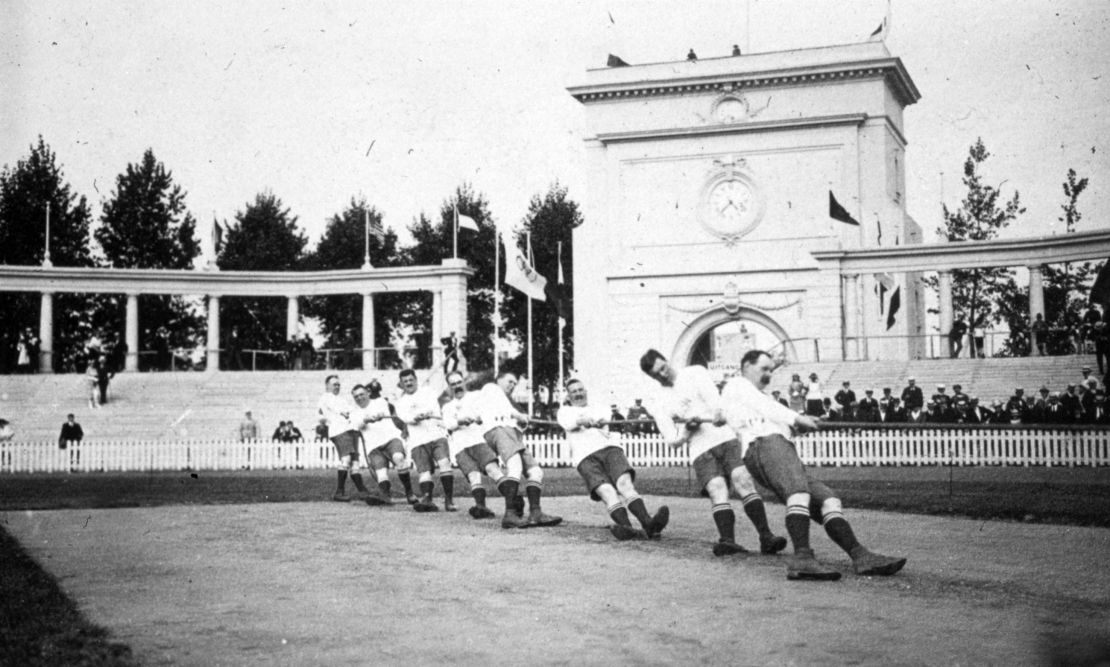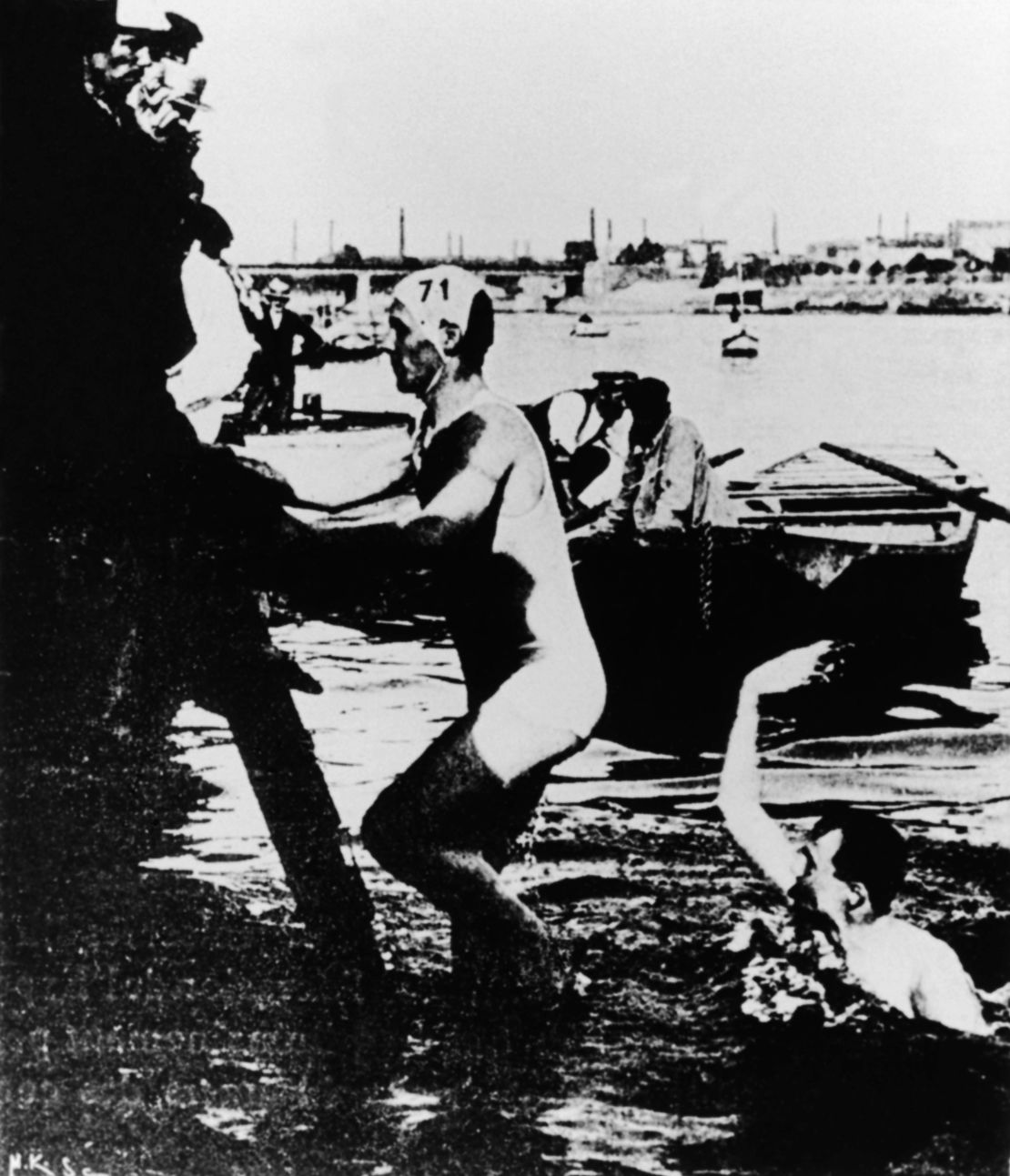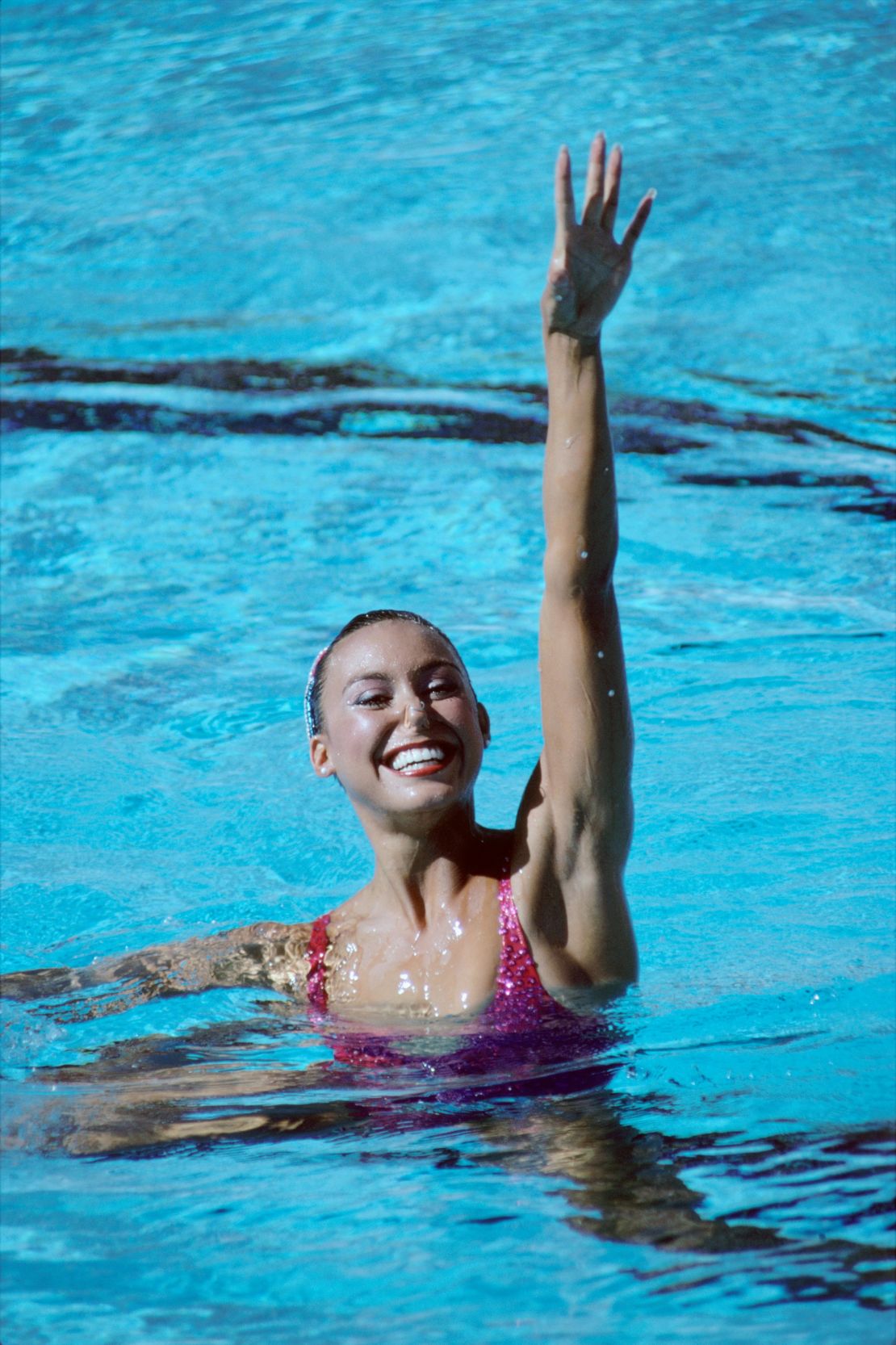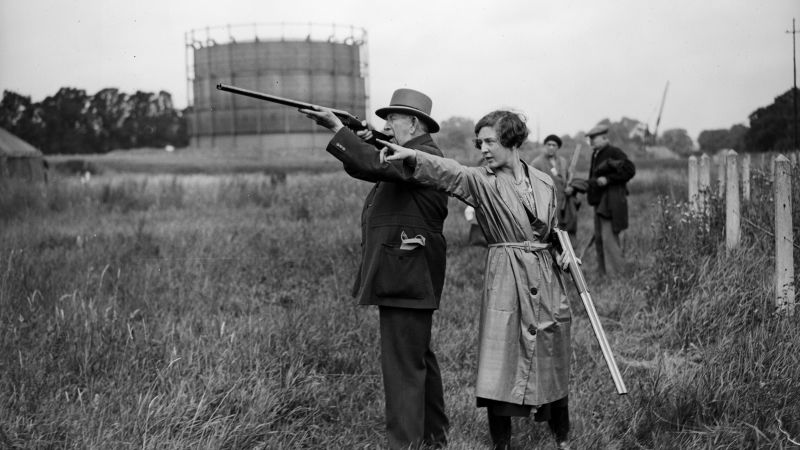CNN
—
By now, you’ve probably heard that breakdancing, or “breaking,” is one of the newest competitive Olympic events at the 2024 Paris Olympics. That’s sparked a lot of debate about what activities should be classified as an Olympic sport. (The Olympics even has an FAQ page dedicated to explaining why breaking is an Olympic sport.)
Breaking is far from the first unconventional sport to be allowed into the Olympic Games. Here’s a look at some of the stranger Olympics sports in modern history:
Tug of war

For most of us, tug of war is an activity consigned to school days and summer camp competitions. But, for 20 years, it was a fiercely contested Olympic event.
The British were rather dominant in this competition, with five of the 10 Olympic medals awarded in the sport going to the UK.
Tug of war was last featured in the 1920 Antwerp Games, with the UK team — made up of City of London police — claiming gold.
Live pigeon shooting
Shooting has been a part of the modern Olympics since its inception. In recent days, a nonchalant shooter from Turkey and a cool, stylish South Korean competitor have gone viral for their style and success at the Paris Games.
As they are today, targets have historically been inanimate objects, but organizers of the 1900 Paris Games decided to go in another direction.
Gruesome as it may sound, competitors lined up to shoot as many live pigeons as they could. Reportedly, around 300 birds were killed in the event.
The winner was Belgian sports shooter Léon de Lunden who, according to the Guinness World Records, managed to shoot down 21 birds in the tournament.
Pistol dueling
In many ways, the early Olympics could be quite intense and organizers simply weren’t content with merely shooting paper targets.
While pigeon shooting never returned after the 1900 Paris Games, organizers came up with pistol dueling – in which two competitors shot at each other – for the 1908 Games in London.
Luckily for all involved, the duels weren’t deadly. Competitors were dressed in protective clothing, and the pistols were loaded with non-lethal wax rounds.
“The joke at the time was … if you did it right, there would have been no silver medalist,” journalist Craig Copetas recently told France 24 TV.
Copetas also said that several years ago, “there was some talk that they would bring back duelling pistols to add some zest appeal to the rifle and pistol competition.”
Probably best they never did.
Obstacle course swimming

This particular competition from the 1900 Paris Games might not look out of place at a modern water park.
Swimmers would have to travel 200 meters down the River Seine in Paris, while making their way over and under a series of obstacles.
Australian swimmer Frederick Lane won gold with a time of 2 minutes 38.4 seconds. Lane was an impressive swimmer who also won gold in the 200-meter non-obstacle race with a time only 13 seconds quicker.
The obstacle course swim only made one appearance at the Olympics, so Lane’s time technically remains the Olympic record.
Motorboat racing
The Olympics has long prohibited sporting events that depend on mechanical propulsion, which is why you don’t see auto racing at the games (despite recent efforts to include it).
There was a rare inclusion of an automobile at the 1904 St. Louis Games when American runner Frederick Lorz surreptitiously travelled 11 miles of the marathon in a car (he was disqualified).
Fast-forward four years later, and organizers allowed combustion engines at the games with motorboat racing as an Olympic heat.
Boaters raced a 40-nautical-mile course at the 1908 London Games and, according to an official report, the heavy seas “made racing an enterprise of some considerable risk, and robbed it of all its enjoyment, except to the most confirmed enthusiasts.”
Only two nations, France and Great Britain, competed in the event and were awarded the only medals in the sport, which never returned to the Olympics after 1908.
Art
From 1912 to 1948, Olympic medals were awarded not just for sport, but also for artistic endeavours such as literature, architecture, music, sculpture and painting. These were then split up into sub-categories, such as town planning and chorus singing.
This was the vision of Baron Pierre de Coubertin, the father of the modern Olympics who wanted to recreate the ethos of ancient Greece.
“In the high times of Olympia, the fine arts were combined harmoniously with the Olympic Games to create their glory,” De Coubertin wrote in 1904. “This is to become reality once again.”
Art competitions premiered at the 1912 Stockholm Games, and some Olympic athletes even participated. Alfréd Hajós — who won the first Olympic gold medal in swimming in 1896 and also played for the Hungarian national football team — won a silver medal in architecture in the 1924 Olympics.
Another unconventional Olympic art competitor was De Coubertin himself, who submitted a poem “Ode to Sport” under a pseudonym that went on to win a gold medal in 1912.
The final Olympic art medals were awarded at the 1948 London Games after it was determined that most of the competitors in the artistic categories were professional and didn’t adhere to the Olympics’ amateur ethos.
Solo synchronized swimming

In what might sound like a contradiction in terms, solo synchronized swimming was a competitive heat at three consecutive games.
Launching at the 1984 LA Games, American swimmer Tracie Ruiz-Conforto took home the gold. After a brief sojourn in bodybuilding, Ruiz-Conforto returned to the sport and won silver at the 1988 games in Seoul.
Solo synchronised swimming failed to make much of a splash with viewers and saw its last outing at the 1992 Olympics.
Today, synchronized swimming is known as “artistic swimming” and swimmers can compete in a duet and team event.
Poodle clipping (not really)
You may have read in numerous publications that live poodle clipping was an Olympic event at the 1900 Paris Games.
However, this appears to be an April Fools prank by a writer for The Telegraph newspaper when writing on the 2008 Beijing Olympics.
The ruse has fooled a number of news outlets, but the publication date of April 1st and the supposed winner Avril Lafoule probably should have been a clue.






